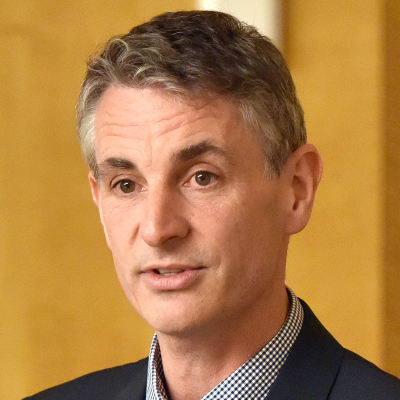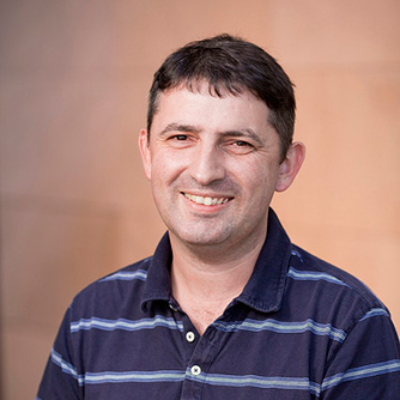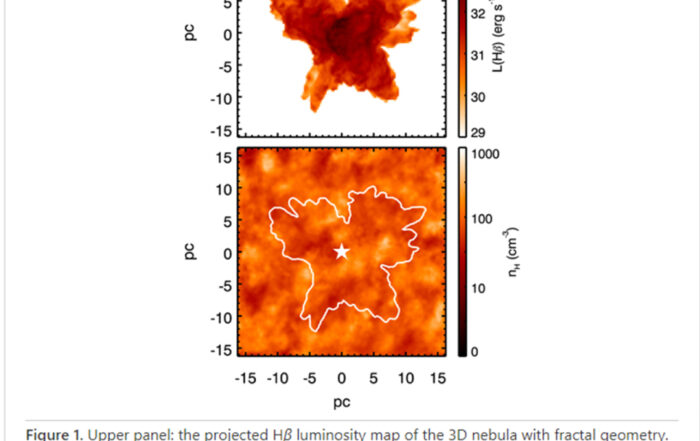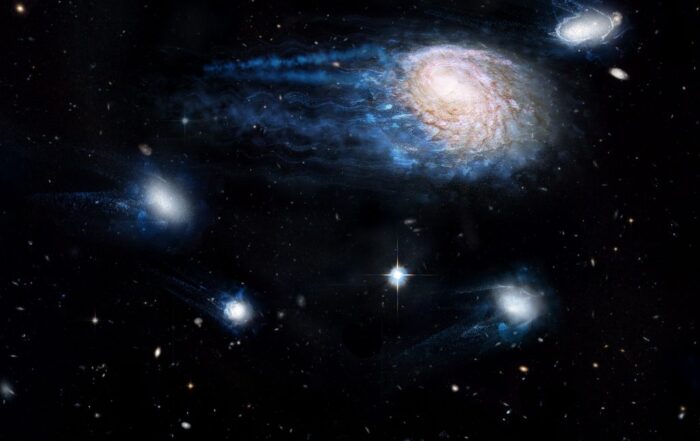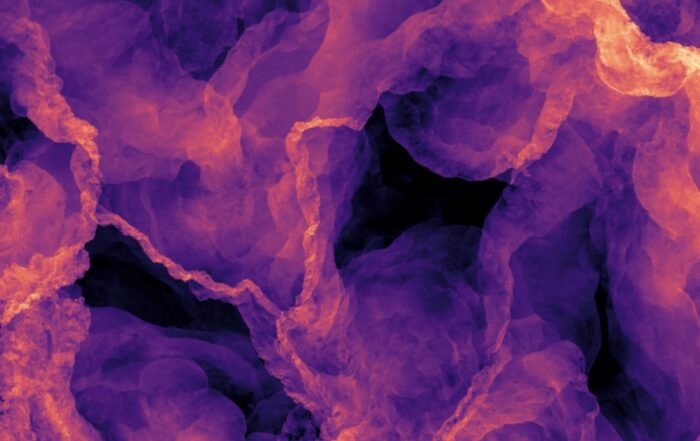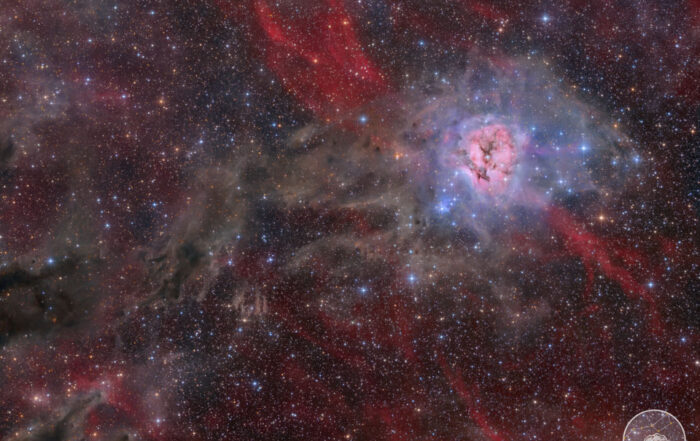Genesis
A supercomputer simulation by Paul Geil and Simon Mutch of the Epoch of Reionsation. The red is opaque neutral hydrogen gas (a proton and an electron). The white spheres are the first stars clumping together from hydrogen and helium. As they start to fuse elements together, the radiation given off ionises the neutral hydrogen gas (rips off the electron), leaving behind transparent ionised gas, which is what is in most of the Universe now.
about genesis simulations
The ASTRO 3D Genesis Theoretical Simulation program, led by CIs Stuart Wyithe, Chris Power and Darren Croton, uses large-scale super-computer theoretical simulations to study galaxy formation and evolution over the last 12 billion years of cosmic time.
The Genesis simulations will provide predictions for our optical and radio surveys from the first stars to the present-day Milky Way. The results of the observational surveys will be used to constrain the simulations and yield more accurate simulations of galaxy formation and evolution. Genesis will create 3D datasets for direct comparison with our optical and radio 3D galaxy surveys.
The structure of the ASTRO 3D Centre of Excellence creates a synergy by embedding theorists within observational nodes; with theorists and observers working more closely than ever before towards our scientific goals.
LOCAL GALAXY HISTORY
The Genesis team is uncovering the history of the local galaxy population, including radio galaxies and Active Galactic Nuclei (AGN). They do this by following the dynamical, stellar and chemical evolution of galaxies across cosmic time to the present day.
TRACKING GALAXY GROWTH
The Genesis team is tracking galaxy growth through star formation and galaxy mergers. They model the build-up of angular momentum at all galactic scales, leading to the emergence and evolution of large-scale structures and the epoch of quasars.
FIRST STARS SIMULATIONS
A key science area that the Genesis team is focused on is simulating the birth of the first stars and modelling their impact on the early Universe:
- How the first stars reionised the neutral hydrogen that existed after the Big Bang
- How the first stars created the first chemical elements
- How the first stars influenced the first proto-galaxy formation
- How the first stars influenced the evolution of the Intergalactic Medium (IGM)
genesis simulations leadership
Latest in genesis
Putting the 3D into ASTRO 3D with fractals
PhD student Yifei Jin from our ANU node and his colleagues have published a letter in the Astrophysical Journal on emission line nebulae and high redshift galaxies. What do Mandelbrot sets and high school chemistry [...]
Closing in on the first light in the Universe
Research using new antennas in the Australian hinterland has reduced background noise and brought us closer to finding a 13-billion-year-old signal The early Universe was dark, filled with a hot soup of opaque particles. [...]
Big galaxies steal star-forming gas from their smaller neighbours
An artist’s impression showing the increasing effect of ram-pressure stripping in removing gas from galaxies, sending them to an early death Image Credit: ICRAR, NASA, ESA, the Hubble Heritage Team (STScI/AURA) [...]
Record-breaking simulation reveals the gaseous turbulence between stars
A visualisation of gas density in the ground-breaking ANU-led simulation, highlighting the intricate gaseous turbulence in the interstellar medium. Credit: Federrath, C. et al. The sonic scale of interstellar turbulence. [...]
